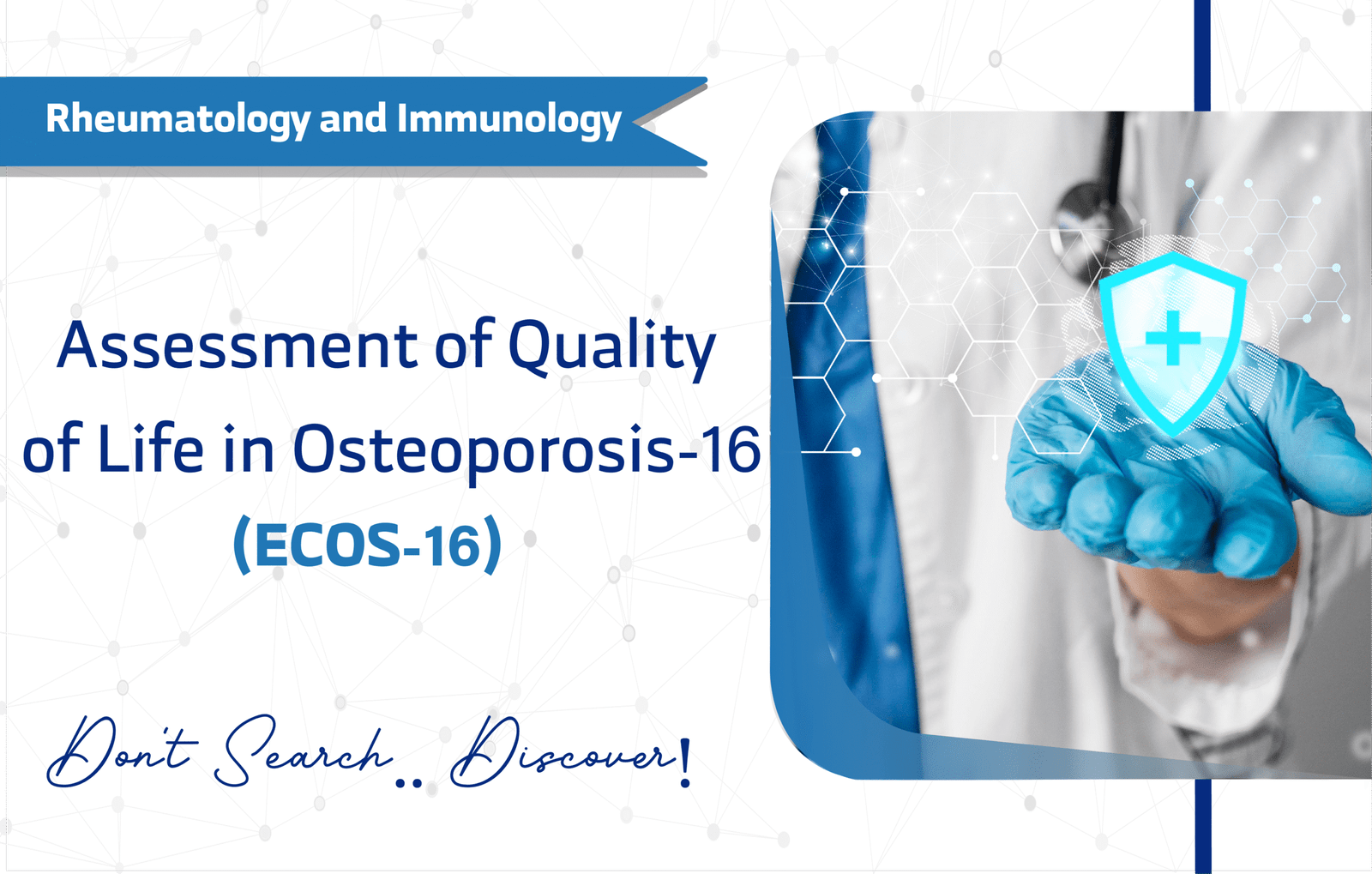Introduction
Irritable Bowel Syndrome (IBS) disrupts patients’ physical, emotional, and social well-being, significantly affecting their quality of life. Therefore, accurately measuring this impact is essential for effective patient care and meaningful research. To meet this need, Patrick and colleagues developed the Irritable Bowel Syndrome Quality of Life Questionnaire (IBS-QOL) in 1998. Since its introduction, the tool has gained widespread recognition. In fact, it has received over 1,500 citations on Google Scholar, reflecting its value and reliability in both clinical and research settings.
This article delves into the IBS-QOL’s key features, applications, and clinical utility, offering valuable insights for researchers and clinicians striving to enhance patient assessment and management in gastroenterology.
Key Features of the Irritable Bowel Syndrome Quality of Life Questionnaire (IBS-QOL)
Purpose and Use
The IBS-QOL aims to assess how IBS symptoms influence a patient’s daily functioning across physical, emotional, and social domains. Clinicians use it to guide treatment decisions, track progress, and identify specific life areas where patients need support. In addition, researchers frequently rely on this tool as a core patient-reported outcome (PRO) measure when evaluating IBS-related interventions in clinical trials and population-based studies.
Target Population
The IBS-QOL is rigorously validated for adults aged 18 years and older. This includes:
- Young adults (18-24 years).
- Middle-aged adults (25-44 years).
- Older adults (45-64 years).
- Seniors (65+ years).
Critically, the questionnaire directly serves individuals diagnosed with irritable bowel syndrome, covering both male and female patients from various cultural backgrounds.
Structure
The IBS-QOL is a concise, 34-item scale that thoroughly assesses how IBS symptoms interfere with daily life. The questionnaire covers eight distinct sub-domains, providing a nuanced understanding of the patient’s experience:
- Dysphoria: Items 1, 6, 7, 9, 10, 13, 16, and 30
- Interference with Activity: Items 3, 18, 19, 22, 27, 29, and 31
- Food Avoidance: Items 11, 23, and 28
- Body Image: Items 5, 21, 25, and 26
- Health Worry: Items 4, 15, and 32
- Social Reaction: Items 2, 14, 17, and 34
- Sexual Health: Items 12 and 20
- Relationships: Items 8, 24, and 33
These items evaluate how emotional well-being, social functioning, dietary habits, and intimate relationships have been affected during the past 30 days.
Scoring Method
The IBS-QOL utilizes a 5-point Likert scale for each item, ranging from 1 (“Not at all”) to 5 (“A great deal”). Raw scores are subsequently converted to a 0–100 scale, where 0 represents poor quality of life and 100 indicates maximum quality of life. Thus, higher scores consistently signify a better quality of life. Both subscale and overall scores are computed, providing both granular and holistic insights into the patient’s functional status.
Administration Format
Administering the IBS-QOL is efficient, since healthcare professionals can administer the questionnaire via:
- Paper-based forms.
- Digital (online) platforms.
- In-person interviews.
It typically takes 10 to 15 minutes for completion. This makes it highly practical for busy clinical and research settings.
Although formal training is not mandatory, clinicians should possess familiarity with patient-reported outcome instruments to maintain consistency and accuracy in data collection.
Applications of Irritable Bowel Syndrome Quality of Life Questionnaire (IBS-QOL)
Thanks to its versatility, the IBS-QOL has become a key resource for healthcare professionals and researchers in gastroenterology. Here are its main applications:
Screening: While not designed for diagnosis, the IBS-QOL helps clinicians evaluate the overall impact of IBS on patients’ lives.
Monitoring: Healthcare providers can use it to observe how patients respond to different treatments over time.
Treatment Planning: The scores reveal individual patient needs, which helps in designing tailored care and rehabilitation strategies.
Research: The tool features prominently in clinical trials that assess the effectiveness of pharmacological and behavioral therapies.
Patient-Reported Outcome (PRO): By capturing insights directly from patients, the IBS-QOL adds depth and authenticity to clinical data—an increasingly important aspect of modern medical care.
Languages and Availability
To support its global application and broad utility, the IBS-QOL has been translated and validated in numerous languages:
- English
- Mandarin Chinese
- Spanish
- French
- Russian.
- Portuguese
- Japanese
- Hindi
This multilingual accessibility greatly enhances its value in diverse clinical and research contexts worldwide.
Notably, users must obtain prior approval from Novartis Pharmaceuticals Corporation and the authors before reproducing or using the IBS-QOL in any form.
Reliability and Validity
The IBS-QOL is consistently recognized as a highly reliable and valid instrument. Its psychometric soundness is substantiated by an impressive Cronbach’s alpha of 0.95 for the total score, reflecting excellent internal consistency.
Limitations and Considerations
Despite its strengths, the IBS-QOL has a few limitations:
- Self-report measure: When used as a self-report tool, responses can be influenced by a patient’s subjective perception, recall bias, or self-report bias.
- Lack of Sensitivity to Change: The tool may not detect minor but clinically meaningful changes in function, especially in cases of mild IBS.
- Licensing Requirements: permission is required for its use, which can sometimes be a barrier for researchers.
Other Versions and Related Questionnaires
Complementary Questionnaires
- IBS Symptom Severity Score (IBS-SSS)
- SF-36
- GSRS (Gastrointestinal Symptom Rating Scale)
Additional Resources
For more information on the IBS-QOL and to access the full questionnaire, visit the following resources:
Frequently Asked Questions (FAQ)
- Who can use the IBS-QOL?
Clinicians, researchers, and other healthcare providers use the IBS-QOL for adults aged 18 andover, specifically those diagnosed with irritable bowel syndrome. - How long does it take to complete the IBS-QOL?
patients and clinicians can typically complete the assessment in 10 to 15 minutes, making it highly practical for busy settings. - How is the IBS-QOL administered?
Healthcare teams can administer the questionnaire via paper-based forms, digital (online) platforms, or through an in-person interview format. - Is there any cost to using the IBS-QOL?
The IBS-QOL requires permission for reproduction or utilization, as it is proprietary and owned by Novartis Pharmaceuticals Corporation and the authors.
A word from ResRef about Irritable Bowel Syndrome Quality of Life Questionnaire (IBS-QOL)
Irritable Bowel Syndrome Quality of Life Questionnaire (IBS-QOL) is a well-established and widely used instrument that offers valuable insights into how IBS affects patients’ everyday lives. Its ongoing use in both healthcare and research continues to support more personalized treatments, deeper understanding, and ultimately, better outcomes for individuals living with IBS.
References
- Patrick, D. L., Drossman, D. A., Frederick, I. O., DiCesare, J., & Puder, K. L. (1998). Quality of life in patients with irritable bowel syndrome: development and validation of a new measure. link
- Huang, W. W., Zhou, F. S., Bushnell, D. M., Diakite, C., & Yang, X. H. (2007). Cultural adaptation and application of the IBS–QOL in China: a disease-specific quality-of-life questionnaire. Quality of Life Research, 16, 991-996.link
- Depew, W., Vanner, S., Paterson, W. G., Groll, D., Hopman, W., Roblin, N., … & Simon, J. (2000). The IBS-36: A quality of life measure for irritable bowel syndrome. Gastroenterology, 118(4), A216. link








